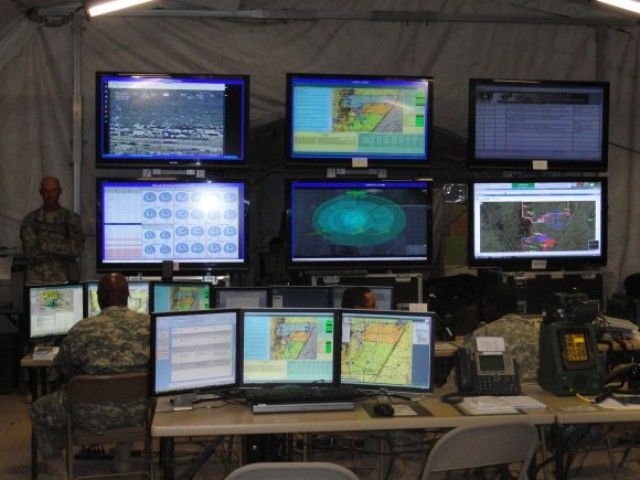
In the ever-evolving landscape of technology, the Internet of Things (IoT) has significantly reshaped how we interact with the world around us. While much of the focus has traditionally been on terrestrial applications, a new frontier is emerging beneath the ocean’s surface: the Underwater Internet of Things (UIoT). This burgeoning field promises to revolutionize underwater exploration, environmental monitoring, and marine resource management. However, at the heart of this transformation lies a crucial component that often goes unnoticed—data storage.
The Underwater Internet of Things: An Overview
The concept of UIoT involves deploying a network of sensors, devices, and systems underwater to collect and transmit data. This data could range from monitoring marine life and tracking ocean currents to detecting pollution levels and mapping the seafloor. Unlike traditional IoT applications, which benefit from relatively stable and accessible infrastructure, UIoT must contend with the unique challenges of underwater environments.
The ocean is a vast and complex domain with its own set of physical and technical constraints. The deep-sea environment presents hurdles such as high pressure, low temperatures, and corrosive saltwater, which affect the reliability and longevity of electronic equipment. To overcome these challenges, UIoT systems need robust and resilient data storage solutions capable of withstanding the harsh underwater conditions while ensuring the integrity and accessibility of the data collected.
The Challenges of Underwater Data Storage
- Environmental Conditions: Underwater data storage systems must be designed to withstand extreme pressures, temperatures, and salinity. These factors can impact the performance and durability of traditional storage media, necessitating the development of specialized solutions.
- Power Constraints: Many underwater IoT devices rely on battery power, which limits their operational lifespan and data storage capacity. Efficient power management and energy-efficient storage solutions are critical to extending the operational life of these systems.
- Data Transmission: Transmitting data from underwater devices to the surface can be challenging due to the limitations of acoustic communication and the potential for signal degradation. Effective data storage solutions must be capable of handling large volumes of data until it can be transmitted, ensuring that valuable information is not lost.
- Reliability and Redundancy: Given the remote and often inaccessible locations of underwater sensors, maintaining the reliability of data storage systems is paramount. Redundancy and fault-tolerance mechanisms are essential to ensure that data is not lost in the event of a device failure.
Innovative Solutions in Underwater Data Storage
To address these challenges, researchers and engineers are exploring several innovative approaches to underwater data storage:
- Pressure-Resistant Storage Devices: Developing storage devices specifically designed to withstand high pressures is crucial. These devices use materials and engineering techniques that ensure the integrity of data storage even in the extreme conditions of the deep sea.
- Energy-Efficient Storage Technologies: Advances in low-power storage technologies, such as solid-state drives (SSDs) and non-volatile memory, are helping to address power constraints. These technologies offer high storage density and low power consumption, making them suitable for underwater applications.
- Data Compression and Aggregation: To manage the limited bandwidth and high latency of underwater communication, data compression techniques are used to reduce the volume of data that needs to be transmitted. Additionally, data aggregation strategies can combine multiple data points into a single transmission, optimizing the use of available bandwidth.
- Acoustic Data Storage and Retrieval: Researchers are exploring the use of acoustic signals for data storage and retrieval. Acoustic data storage systems can embed information in sound waves, which can be retrieved using specialized sensors. This approach leverages the natural properties of sound transmission underwater, offering a potential solution for storing and accessing data in situ.
- Submersible Data Loggers: Submersible data loggers are designed to collect and store data from underwater sensors. These loggers are equipped with robust housings and advanced data management features to ensure reliable performance in challenging environments. They often include features like onboard data processing and encryption to protect the integrity of the collected data. Feel free to visit their page to learn how to invite someone to dropbox.

Applications and Future Directions
The role of data storage in UIoT is not limited to overcoming technical challenges; it also has significant implications for various applications:
- Marine Research: UIoT systems equipped with advanced data storage capabilities enable researchers to collect and analyze vast amounts of data on marine ecosystems. This information is crucial for understanding oceanographic processes, studying marine biodiversity, and monitoring environmental changes.
- Resource Management: Effective data storage solutions support the management of marine resources by providing accurate and timely information on fishing activities, pollution levels, and habitat conditions. This data is essential for sustainable resource management and conservation efforts.
- Disaster Response: In the event of underwater natural disasters such as tsunamis or volcanic eruptions, UIoT systems with reliable data storage can provide critical information for emergency response and mitigation efforts. This data can help assess damage, track the movement of hazardous materials, and coordinate rescue operations.
- Underwater Exploration: As exploration ventures deeper into the ocean, the need for robust data storage becomes even more critical. Advanced storage solutions enable the collection of high-resolution images, video footage, and environmental data from remote and inaccessible locations.
Conclusion
The role of data storage in the Underwater Internet of Things is pivotal to the success and advancement of this emerging field. By addressing the unique challenges of underwater environments and leveraging innovative storage technologies, researchers and engineers are paving the way for more efficient and reliable UIoT systems. As technology continues to evolve, the integration of robust data storage solutions will be essential for unlocking the full potential of underwater exploration, environmental monitoring, and resource management. The future of UIoT holds promise for transformative advancements, and data storage will be at the core of this exciting journey into the depths of the ocean.



